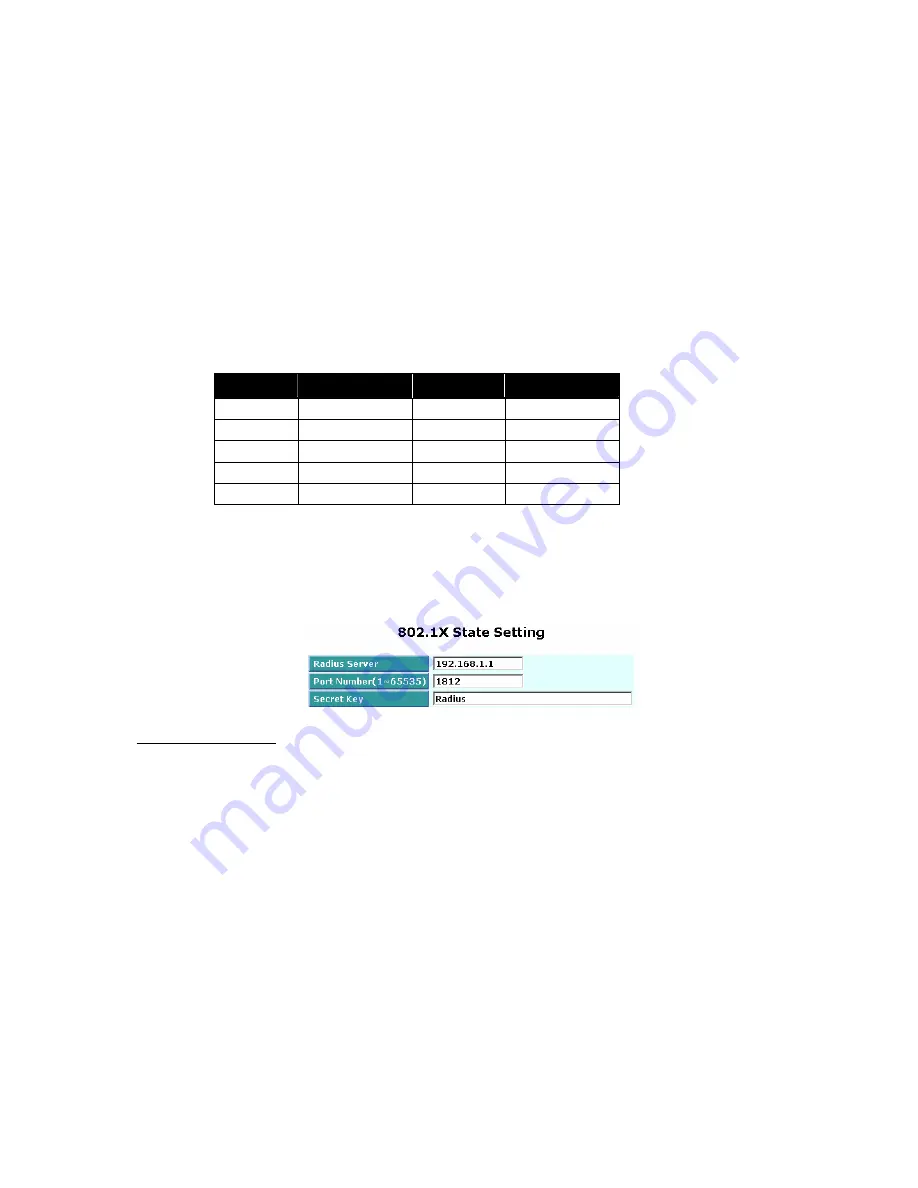
connected is in the unauthorized state, the supplicant and the devices connected to this port won’t
be allowed to access the network.
10. When the supplicant issue an EAP-Logoff message to Authentication server, the port you are using
is set to be unauthorized.
Only MultiHost 802.1X is the type of authentication supported in the switch. In this mode, for the devices
connected to this port, once a supplicant is authorized, the devices connected to this port can access the
network resource through this port.
802.1x Port-based Network Access Control function supported by the switch is little bit complex, for it just
support basic Multihost mode, which can distinguish the device’s MAC address and VID. The following table is
the summary of the combination of the authentication status and the port status versus the status of port mode,
set in 802.1x Port mode, port control state, set in 802.1x port setting. Here Entry Authorized means MAC entry
is authorized.
Port Mode
Port Control
Authentication
Port Status
Disable
Don’t Care
Don’t Care
Port Uncontrolled
Multihost Auto
Successful Port
Authorized
Multihost Auto
Failure Port
Unauthorized
Multihost
Force Unauthorized Don’t Care
Port Unauthorized
Multihost
Force Authorized
Don’t Care
Port Authorized
3.14.1 State
This function is used to configure the global parameters for RADIUS authentication in 802.1x port security
application.
Parameter description:
y
Radius Server:
RADIUS server IP address for authentication.
Default: 192.168.1.1
y
Port Number:
The port number to communicate with RADIUS server for the authentication service. The valid value
ranges 1-65535.
Default port number is 1812.
y
Secret Key:
The secret key between authentication server and authenticator. It is a string with the length 1 – 31
characters. The character string may contain upper case, lower case and 0-9. It is character sense. It
is not allowed for putting a blank between any two characters.
Default: Radius
47
















































